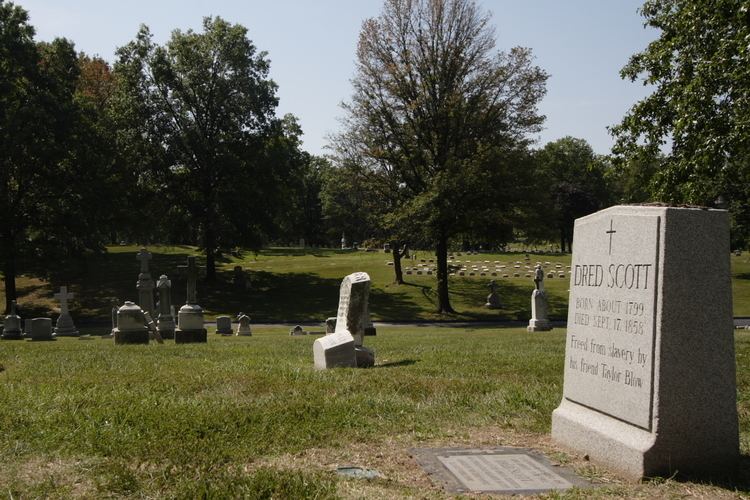Established 1854 Size 470 acres (190 ha) Phone +1 314-381-1313 | Type Catholic Founded 1854 Number of graves 300,000 | |
 | ||
Country United States of America Address 5239 W Florissant Ave, St. Louis, MO 63115, USA | ||
Calvary Cemetery is a Roman Catholic cemetery located in St. Louis, Missouri and operated by the Archdiocese of St. Louis. Founded in 1854, it is the second oldest cemetery in the Archdiocese. Calvary Cemetery contains 470 acres (1.9 km²) of land and more than 300,000 graves, including those of General William Tecumseh Sherman, Dred Scott, Tennessee Williams, Kate Chopin, and Auguste Chouteau.
Contents
History
In 1849 a cholera epidemic struck St. Louis and claimed the lives of more than 4,000 people. This disaster prompted city officials to pass an ordinance banning the creation of new cemeteries within city limits, as it was thought that such a measure could prevent additional people from becoming sick. At the same time, existing cemeteries in St. Louis were nearly full and had no room to expand. Recognizing the need for a new rural Catholic cemetery, Archbishop Peter Richard Kenrick purchased Senator Henry Clay’s “Old Orchard Farm” in 1853, located several miles northwest of St. Louis. Kenrick initially set aside the eastern half of the 323-acre farm for a new cemetery, and kept the western half for himself, where he lived for many years in the former Clay Mansion. Thus Calvary Cemetery opened for burials in 1854, with Archbishop Kenrick as its first president.
Prior to the establishment of Calvary Cemetery, parts of the Clay farm had served as a burial place for Native Americans and soldiers from nearby Fort Bellefontaine. After 1854, these remains were reinterred in a mass grave under a large crucifix at one of the highest points in the cemetery. Graves at other Catholic cemeteries across St. Louis, such as Old Cathedral, Rock Springs, Holy Trinity, Old St. Patrick's, New Bremen and others were also dug up and reinterred at Calvary. As the number of graves steadily grew, the cemetery acquired more land, eventually reaching its present-day size of 470 acres, with over 300,000 casketed graves as well as two public mausoleums and columbaria, as well as a number of private family mausoleums and sarcophagi. Accessible space for full-casket traditional burials is available for the next 300 years at Calvary Cemetery, according to Archdiocesan sources. Many former St. Louisans choose to return to Calvary for burial, including August Chouteau X, a great-great-great grandson of the city's founder, who lived most of his life in Los Angeles, CA, as well as noted writer and dramatist Tennessee Williams, who was returned here for burial from New York City.
In 2003, a Lewis and Clark Bicentennial Grant funded the construction of a monument at Calvary Cemetery to honor four Nez Perce men who traveled to St. Louis in 1831 from their home in the Pacific Northwest. When they arrived in St. Louis these men had to rely on hand gestures to communicate, and thus nobody was able to ascertain fully the purpose of their journey. Two of the men, Black Eagle and Speaking Eagle, died of illness while in St. Louis and are buried in Calvary Cemetery.
